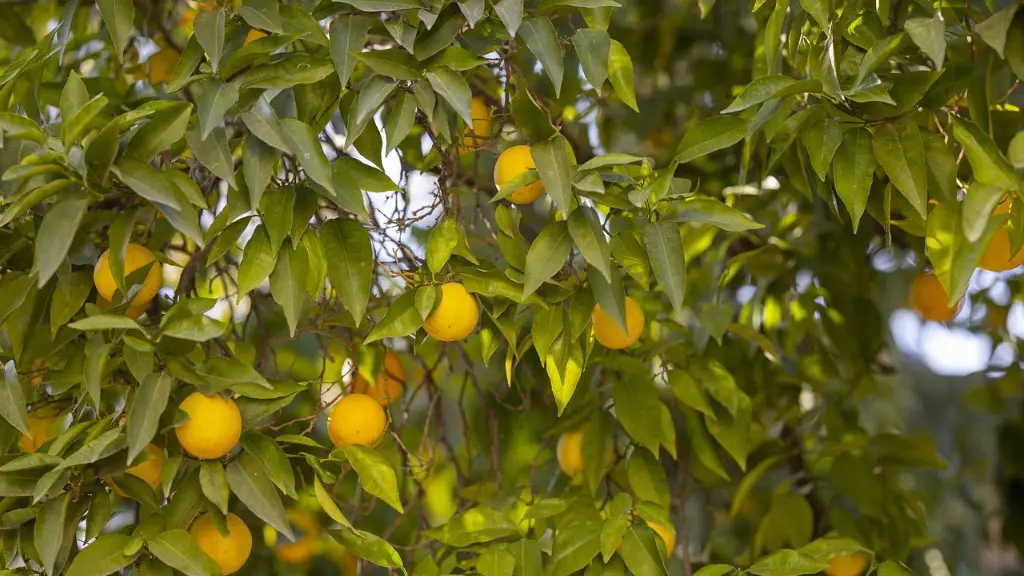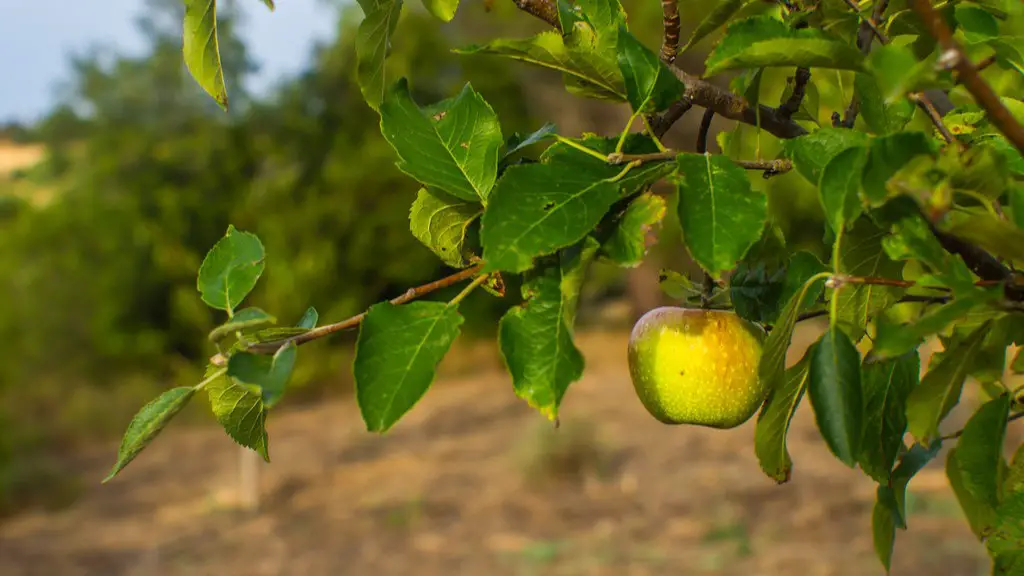Palm trees are a beautiful and majestic addition to any outdoor area. From grandiose fan palms to dainty and miniature windmill palms, there’s an endless array of options to choose from. As they’re not quite as common as other, more traditional plants, it can be difficult to know exactly what to feed a palm tree. If you’re looking to get the most out of your palm tree, keep reading to help ensure it gets all the nutrients it needs.
The most important thing to remember is that palm trees are heavy feeders. This means they need more nutrients than other trees. In addition to standard plant fertilizer, they will benefit from extra nutrient supplements. A good way to do this is to add iron and magnesium to their soil. This will help them to remain healthy, and give them the upper hand in any external stresses or environmental changes.
Palm trees thrive on nitrogen. Look for fertilizers that contain a large proportion of nitrogen, as this will provide them with the most nutrients. Nitrogen is key for encouraging healthy growth within the tree and for stimulating new leaves. Keeping a regular schedule for fertilizing is important, as it will help the tree to stay healthy and grow to its full potential.
In order to manage their growth rate, a highly soluble fertilizer (in liquid form) is the way to go. When using a liquid fertilizer, mix it with double the amount of water that is indicated in the instructions. Do this every two weeks during spring and summer months, and every four weeks during autumn and winter. To get the most out of the fertilizer, apply it directly to the ground at the base of the tree.
It’s also important to consider the type of soil that the tree is planted in. If the soil is significantly alkaline, then you will need to add sulfur to the mix to create a more balanced pH level. The same goes for overly acidic soil – add some lime to get the balance right. The soil should be moist, but not overly saturated. If it’s too wet or dry, it will really impact the tree’s growth rate.
Palm trees also need plenty of sunlight, so be sure to choose a spot that’s exposed to natural light for most of the day. Whilst palms are heat resistant and generally quite sturdy, it’s important to mulch the soil around their trunk to preserve moisture during dry periods. This will help keep the soil nourished and prevent the surface from becoming too dry or too hot for a prolonged period of time.
Finally, remember that palm trees require plenty of water. Aim to give them a thorough watering every few days to ensure that their root system doesn’t become desiccated. When it comes to moisture, more is generally better, as long as you’re not overly saturated the soil.
Nutrients
Nitrogen is of utmost importance when it comes to feeding your palm tree. It’s essential for faster growth, as it helps to stimulate new leaves. A liquid fertilizer is the best way to ensure that the tree’s roots can absorb the nutrients straight away. Additionally, make sure you add other crucial minerals, such as iron and magnesium, to the mix to really elevate your tree’s health.
Regular fertilizing schedules should be adhered to during the growth season. Do this every two weeks in spring and summer, and every four weeks in autumn and winter. It’s important to adjust the timing to accommodate any changes in temperature or the tree’s rate of growth. A highly soluble fertilizer is the best way to ensure that the tree’s roots can absorb the nutrients effectively.
Soil Management
It’s also wise to consider the type of soil that the tree is planted in. If the soil is either too alkaline or too acidic, it’s likely that it will stunt the tree’s growth. Adding sulfur and lime to the right levels can help to balance the soil, and ensure that the tree can absorb all the nutrients that it needs.
Keeping the soil moist is also essential. Overly wet or dry soil will cause the tree to struggle, so it’s important to pay attention to the soil’s condition. If the area that you live in is prone to long dry spells, it can be beneficial to mulch the soil with some organic matter. This will help to retain moisture and prevent the surface from becoming too dry or too hot for a prolonged period.
Water
Whilst nutrient uptake is fundamental, water is equally as important when it comes to keeping your palm trees healthy. Aim to give them a thorough watering every other day, so as to prevent their root system from becoming desiccated. However, you should be careful not to over water; the soil should remain just moist to the touch.
If you think that the area doesn’t receive enough natural rainfall, setting up a sprinkler system is a great way to provide your tree with the water supply it needs. Utilizing and setting up a watering system, such as a sprinkler, means that you won’t have to worry about manually watering your tree several times a week. This will really aid you in keeping the soil moist and healthy.
Lighting
Palm trees need to be in an area that’s exposed to sunlight most of the day. This will ensure that they receive all the light they need, and are able to keep growing and thriving. When kept in a part of the garden that’s slightly more shaded, you may need to provide artificial lighting to ensure that the tree receives the nutritional and lighting benefits it needs.
For best results, natural sunlight is recommended over grow lights. However, as some areas are unable to meet the photosynthetic requirements of the tree, providing some extra light may be necessary to keep the tree healthy. To get the most out of the tree, always try to make sure that the tree is in direct sunlight for most of the daytime.
Fertilizing Frequency
To get the most out of your palm tree, make sure to keep the fertilizing schedule regular. Fertilize the tree every two weeks during the spring and summer months, and every four weeks in autumn and winter. This will help to keep the tree healthy and maintain its growth rate.
It’s important to adjust the frequency of fertilizing to any changes in the local climate. For example, if there is an extended period of heat wave, fertilizing more regularly would be beneficial, to provide the tree with the extra nutrients and minerals it needs to survive.
pests and Diseases
Unfortunately, palm trees are prone to several pests and diseases. Primarily, mealybugs and spider mites can be a common pest problem. To get rid of them, wash them off with a forceful spray of water and use an appropriate insecticidal shampoo on the foliage. Planting the tree in an area that receives plenty of sunlight may also help to prevent infestation.
When it comes to diseases, the most common problems that palm trees suffer from are fungal diseases that affect the roots and stem, as well as browning of the foliage. To keep the tree healthy and prevent the spread of any illnesses, make sure that you water the soil only, and not the leaves or trunk. You should also keep the roots damp, but not saturated.




